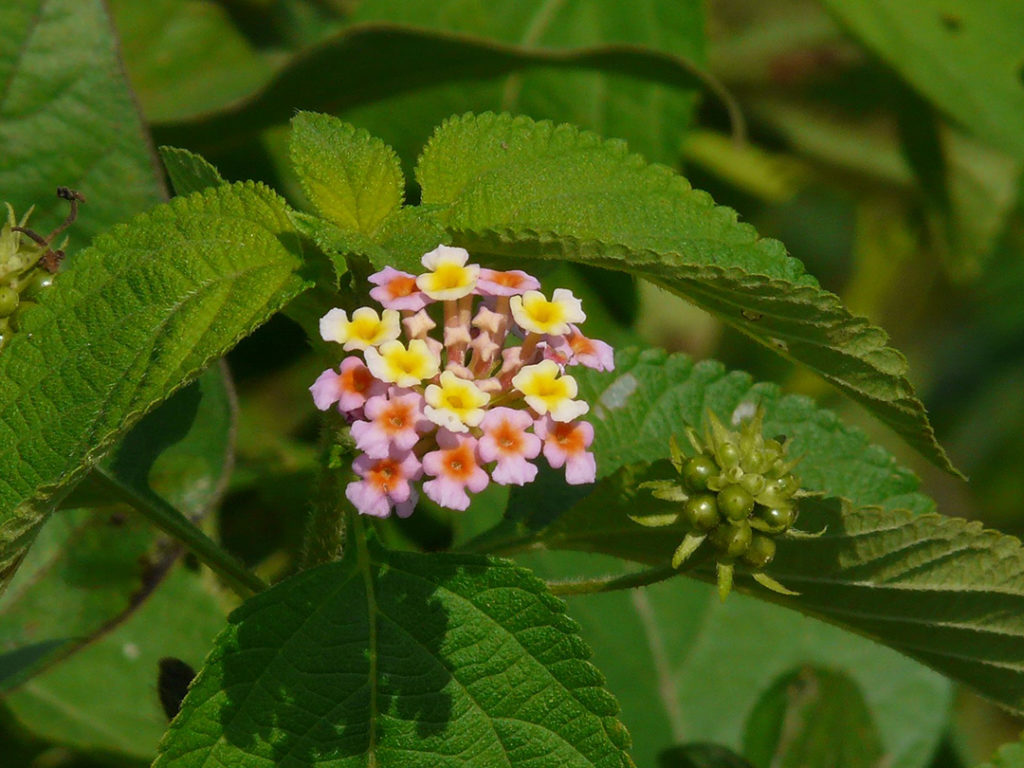
Congo (Congo-Brazaville, Republic of Congo)
Lantana
Lantana camara

General Description / Cultural Significance
There are many fragrant plants in the Congo. One is Lantana, an aromatic tropical shrub from the Verbenaceae family that is rich in vital medical compounds. It produces small flowers and a sweet-tasting juicy fruit. The shrub grows predominantly in the southern region and has a very specific scent that is well-known to the Congolese. The flowers come in colors that can be pink, white, orange, red, yellow, or purple. It can be a prized ornamental plant, but the people in the Congo also use the flowers and the aromatic leaves which have a cooling, minty quality as tea.
Lantana camara has a history of use as herbal medicine, and has been found to be a source of microbicides, fungicides, and nematicides. The qualities of its phytochemistry include anti-inflammatory, antioxidant, and antibacterial activities that make it highly effective against tuberculosis, malaria, respiratory tract infections, coughs, and headaches, and is made into a lotion to treat wounds. The majority of its bioactive constituents are found in its leaves, which are sometimes chewed with rock salt and swallowed. The plant also produces essential oils that are useful for its medicinal qualities.
Climate Change/Conservation Status
Congo has made environmental issues and sustainable management a priority in its development. As early as the 1980s, the Congo established laws against deforestation. Congo-Brazzaville has one of the lowest deforestation rates in the world, and the forests of the Congo basin are the second largest continuous rain forest. They are extremely important in absorbing carbon and contributing to the water cycle globally. There has also been an effort to reduce fuel and wood consumption in the country. In 2019, they set up the National Green Climate Fund to finance protection of the national ecosystem.
However, assessments found that climate change might cause more prolonged and frequent dry periods in the Congo rainforest, and under a high emissions scenario, the country’s temperatures could rise and lead to detriment for its biodiversity. Climate change adaptation should focus on reducing the impact of rainfall variability and higher temperatures. Lantana camara specifically is an invasive species, and a study found that much of the African continent will remain climactically suitable for it in spite of the effects of climate change. However, the study also found that changing temperatures and conditions could cause the species to move into areas it hasn’t been before, thus changing those ecosystems.
Alternate Names
Common Lantana
Lantana
Red Sage
Sources
Embassy of the Congo, Washington, D.C. This statement can be found on the World Sensorium original website.
Gettleman, J., 2012. The World’s Worst War. The New York Times. [website]
Whiting, A., 2017. “Hidden” hunger crisis in Congo pushing it closer to famine. Reuters. [website]

